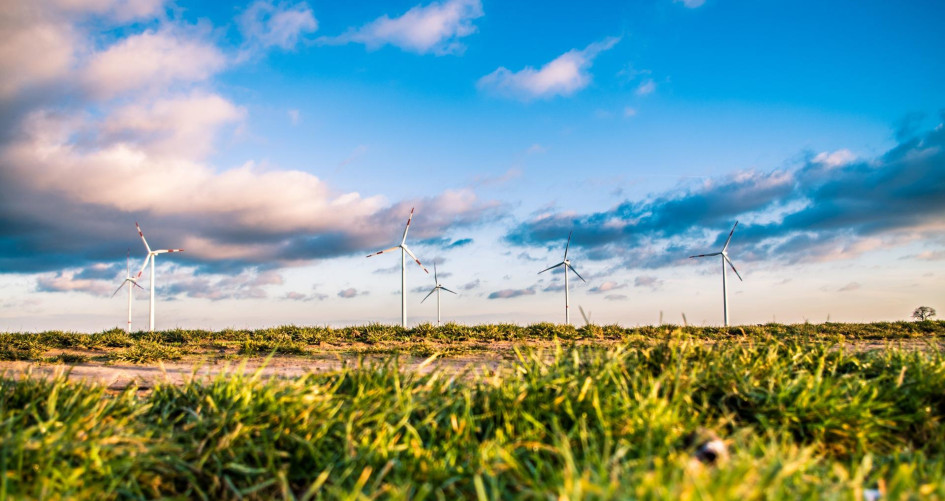In 2012, Microsoft voluntarily introduced an internal carbon fee that holds its business units financially accountable for their carbon emissions. It’s a financial model that puts an incremental fee on carbon emissions associated with the company's global operations for data centers, offices, labs, manufacturing, and business air travel. The carbon fee is set each year based on the estimated cost of internal efficiency, renewable energy, carbon offset, e-waste recycling, and other innovative research projects to be carbon neutral. The carbon fee is already changing behavior at Microsoft – because its business units now include the cost of carbon into their annual budgets, they have a real incentive to reduce their emissions.
Key facts
- With the funds collected, Microsoft has purchased more than 10 billion kilowatt-hours of green power, reduced emissions by 7.5 million tonnes of carbon dioxide equivalent and saved more than USD 10 million per year
- Microsoft’s community offset projects have reached more than three million people around the globe since 2012
- Microsoft expects to invest more than USD 50 million over the next three fiscal years from its carbon fee fund
The problem
Large companies typically have a substantial carbon footprint from their global operations, production and supply chain. Many private sector companies recognize they need to be part of the solution and in fact, sustainability strategies was one of the top five global challenges in the 2015 CEO Challenge survey.
Some jurisdictions are already imposing carbon taxes, including countries such as Ireland and Chile, and regions such as British Columbia.
The solution
In 2012, Microsoft made a companywide commitment to become carbon neutral. In order to meet that goal, Microsoft chose to implement a carbon fee that allocates the cost of becoming carbon neutral across its major business units. Each quarter, Microsoft tracks and analyzes its energy use from data centers, offices, labs and manufacturing, as well as emissions associated with business air travel. Those kilowatt-hours and miles and class of air travel are then converted into tonnes of carbon.
Microsoft offsets those emissions by investing in projects that reduce carbon emissions, recycle e-waste, generate green power, make buildings more efficient, and offset emissions through community projects around the world. Each business unit contributes a proportional amount to the carbon fund based on their emissions and this year’s carbon price.
Each business unit reduces electricity-related emissions directly (such as through efficiency projects) where practical. Carbon neutrality for actual electricity-related emission is achieved through green power investments such as renewable power purchase agreements and renewable energy certificates. For emissions from air travel, fuel consumption (such as from backup generators) and any electricity-based emissions that can’t be mitigated through qualifying green power investments, Microsoft then turns to a portfolio of community investments in carbon offset projects.
Helping the planet
Microsoft focuses on projects that will accelerate climate friendly innovation. From developing new ideas internally—with the aim of piloting and proving their value before sharing them more broadly—to investing funds in support of external projects and research, Microsoft is helping the world transition to a low-carbon future while addressing its carbon footprint.
By using funds collected from the carbon fee, Microsoft sponsors energy efficiency projects, renewable energy projects, sustainable e-waste recycling projects, and carbon offset sustainable community projects. For example, Microsoft purchased more than 3 billion kWh of renewable energy (equivalent to 100% of its global electricity use), and has a carbon offset project portfolio representing more than 600,000 metric tonnes of carbon dioxide emissions.
Microsoft estimates that the field driven internal carbon reduction projects funded in the last two years have not only driven broad awareness of the need to conserve, but will lead to lifetime carbon reductions of 31,000 megatonnes of CO2e. This is equivalent of the emissions produced from driving an average passenger vehicle over 70 million miles or from the average annual electricity consumption of approximately 3,000 homes.
Helping people
Since the start of the program, Microsoft has funded more than 60 projects in 23 countries by investing more than USD 4 million. One of the carbon offset projects it funds is the Mongolian Insulation and Efficient Stoves project. In addition to reducing heating fuel costs by up to 60%, the project helps reduce indoor smoke by at least 80% and has a significant impact on the health and well-being of 167,000 households.
Another carbon offset project that Microsoft funds is the Guatemala Water Filtration & Cookstoves project. The water filter removes 99% of pathogens, and the improved cookstoves reduce harmful indoor air pollution. In addition to the health and environmental benefits of reducing deforestation for fuel use, the project employs 800 people and empowers women by saving them time cooking and collecting wood.
Spillover effect
The Microsoft carbon fee model is simple, repeatable, and scalable. It allows for environmental action to be deeply and broadly embedded in the financial and executive decision making structure across the organization. The model is based on consumption, is not hard to manage and does not require complicated credits to track or trade. This simplicity makes the model transferable and it can easily be adapted to fit other organizations. The basic formula is universal: carbon emissions multiplied by carbon price equals the carbon fee. Microsoft has created a detailed guide for any organization to replicate its model at http://aka.ms/carbon.




Images owned by the activity partners, all rights reserved.

